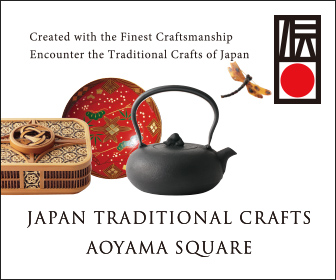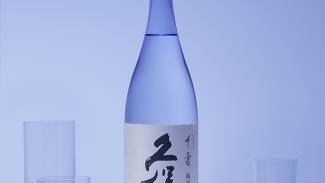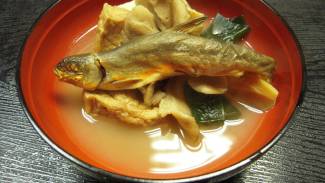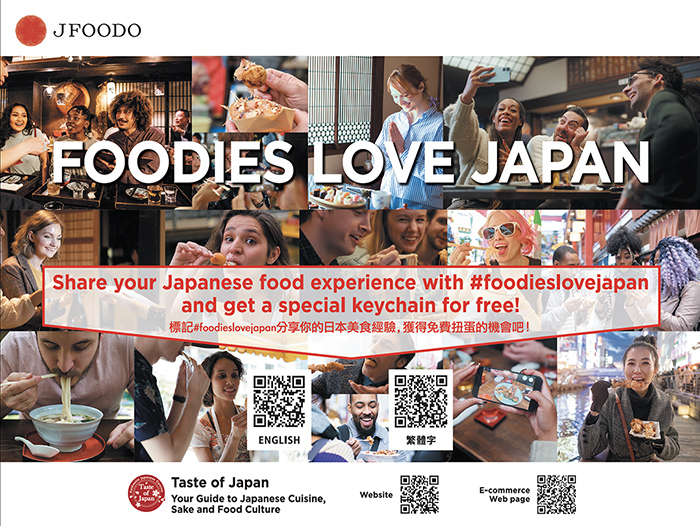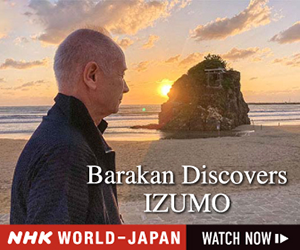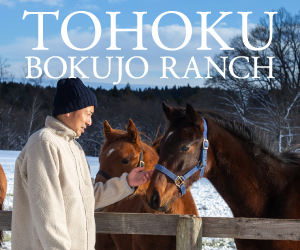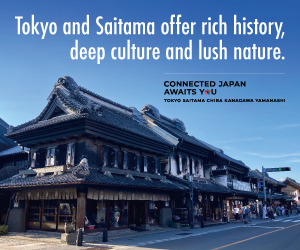GASTRONOMY TOURISM 1
AGENCIES UNITE TO ENCOURAGE FOOD TOURISM
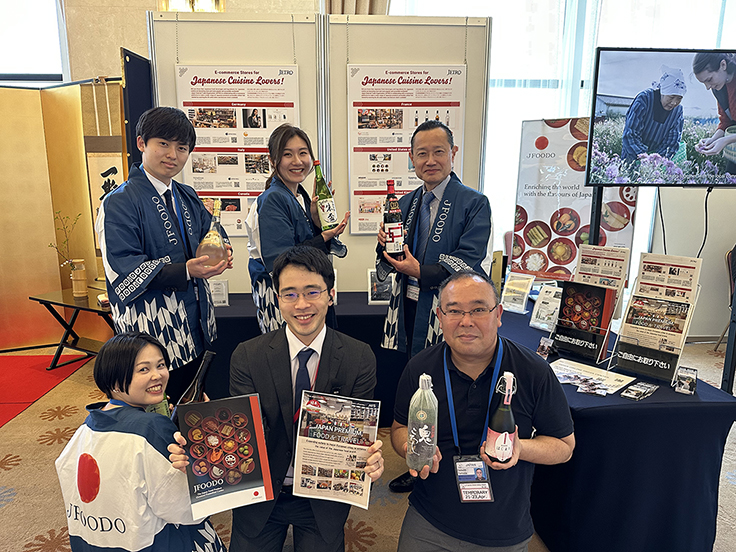
JFOODO
A year has passed since Japan reopened the border for individual tourists. The number of inbound tourists in September recovered to 96.1% of the level in September 2019, before the coronavirus pandemic, and visitors from more than a dozen countries and regions — Scandinavian and Middle Eastern countries, South Korea, Taiwan, Singapore, Indonesia, the Philippines, Vietnam, Australia, the U.S., Canada, Mexico, Germany, Italy and Spain — set new records for the month.
To satisfy tourists’ increasingly diverse interests and offer them opportunities to immerse themselves in Japanese culture, a variety of efforts are being made in Japan’s tourism sector. One is the promotion of food tourism through a collaboration of three government-related organizations: the Japan External Trade Organization, the Japan Food Product Overseas Promotion Center (JFOODO) and the Japan National Tourism Organization.
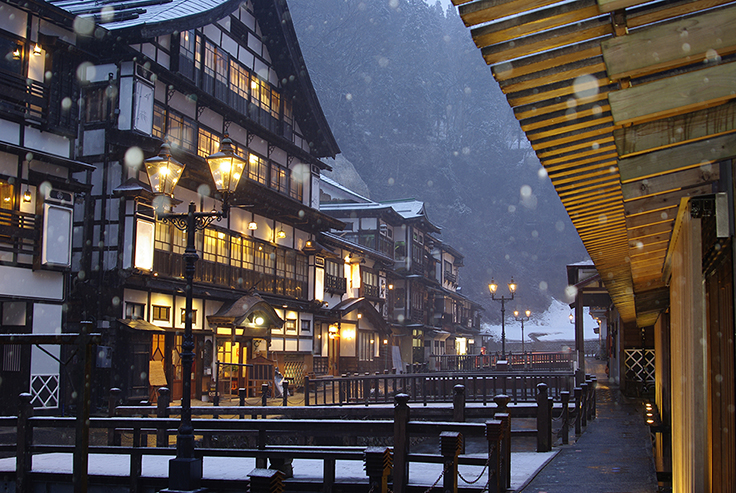
GETTY IMAGES
Cross-organizational effort
JETRO works to enhance the relationship between Japan and the rest of the world in trade and investment, with a core focus on promoting foreign direct investment into Japan and helping small and midsize enterprises — especially those dealing with agricultural, forestry, fishery and food products — maximize their global export potential. Its activities include supporting companies and startups doing business overseas and conducting surveys and research.
JFOODO, established by the government in 2017 as part of JETRO, aims to boost the export of agricultural, forestry, fishery and food products by branding them and promoting them widely around the world. It provides integrated marketing communication for products overseas, information on foreign markets and business practices, and business assistance in collaboration with local marketers. For example, an extensive marketing campaign consisting of videos and social media ads, events and promotions at restaurants was held in China last year to promote Japanese sake and cuisine. A similar campaign for Japanese tea and wagyu was held in the U.S., and another promoted marine products in Hong Kong and Taiwan last year. There have also been projects to promote multiple products in combination — examples include fermented seasonings such as soy sauce, miso, rice vinegar and mirin (sweet cooking sake), other Japanese foods such as rice, wagyu and marine products, as well as boxed lunches containing a variety of delicacies.
JNTO aims to boost Japan’s inbound tourism market to drive economic development and regional revitalization, improve international understanding and strengthen the Japan brand. Its core activities include gathering and analyzing data, marketing, promoting regional tourism, enhancing the international traveler experience and creating projects to attract conferences, events and exhibitions.
In December 2022, these three organizations signed a memorandum of understanding on collaborating to promote inbound tourism and exports of agricultural, forestry, marine and food products, based on the understanding that food is a main draw of foreign visitors to Japan.

NIHONMATSU TOURISM FEDERATION
Showcasing diverse potential
In the same month, JFOODO and JNTO booths showcased their efforts on food-related products and tourism at the seventh World Forum on Gastronomy Tourism, organized by the World Tourism Organization, in Nara Prefecture. The event gathered more than 450 participants from about 30 countries. As part of this event, JNTO conducted a media tour demonstrating the concept in Nara.
Last March, JFOODO organized a symposium in Tokyo gathering 410 participants in person or online. The first part of the event featured two examples of ongoing promotions for Japanese tea and sake supported by JFOODO. The second part was a panel discussion on post-pandemic promotional activities overseas and the stimulation of demand for inbound tourism. It featured the two speakers from the first session, representing a tea manufacturer and a sake brewery, a JNTO official and Lithuanian Ambassador Aurelijus Zykas.
JFOODO was present at various Group of Seven-related events this year. At the meeting of G7 agriculture ministers in Miyazaki in April, JFOODO, JETRO and JNTO jointly exhibited the products they promote and told the international audience about their activities and its effects on tourism.
At the G7 summit in Hiroshima in May, JFOODO and JETRO had joint exhibits and a video on the promotion of Japanese food products in the international media center. A JFOODO booth there also served media people various promotional foods and drinks from across the country, such as rice balls, ramen, sushi, wine and craft beer.
In August, the Agrifood Expo Tokyo — a national annual exhibition to facilitate matching opportunities for buyers and producers of agricultural, forestry, marine and food products — was held for the first time in four years as the pandemic eased. The event was organized by the Japan Finance Corp., a government-owned entity, and brought together 465 exhibitors and 8,889 visitors. Officials from the three groups shared insights in a panel discussion with representatives from Kanazawa Daichi, an organic farm in Ishikawa Prefecture, and the Umenoyado sake brewery in Nara Prefecture about how to achieve the synergistic expansion of exports and inbound tourism.
Promoting food tourism has become a national strategy. It offers opportunities for foreign visitors to not only enjoy a variety of local foods, but also experience Japan’s food culture, see how various environments nurture ingredients and study area histories and traditions across the nation. The value of things that one can only experience or taste at a specific place and time is increasing all the more because the pandemic years deprived everyone of mobility. JFOODO, JETRO and JNTO will continue to collaborate and strive to help tourists looking for such things and support those who aim to help them find them.



